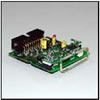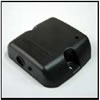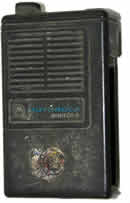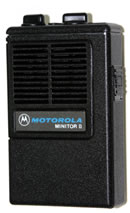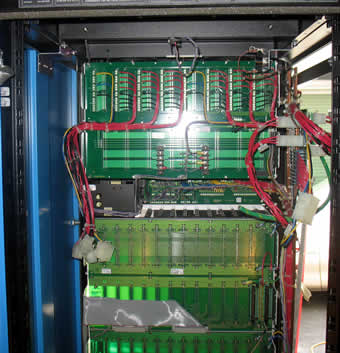BloostonLaw Telecom Update Published by the Law Offices of Blooston, Mordkofsky, Dickens, Duffy & Prendergast, LLP [Portions reproduced here with the firm's permission.] www.bloostonlaw.com |
| Vol. 13, No. 22 | May 26, 2010 |
 Red Flag Enforcement
Begins June 1 The Federal Trade Commission, at the request of Congress, delayed until June 1 enforcement of its Red Flag Rule to give creditors and financial institutions more time to review FTC guidance and develop and implement written Identity Theft Prevention Programs. The June 1 deadline applies to entities under the jurisdiction of the FTC and does not affect the Address Discrepancy or Card Issuer Rules. Under the new rules, all businesses that maintain a creditor-debtor relationship with customers, including virtually all telecommunications carriers (but other companies as well), must adopt written procedures designed to detect the relevant warning signs of identity theft, and implement an appropriate response. The Red Flag compliance program was in place as of Nov. 1, 2008. But the FTC will not enforce the rules until June 1, 2010, meaning only that a business will not be subject to enforcement action by the FTC if it delays implementing the program until June 1. The FTC announcement does not affect other federal agencies’ enforcement of the original Nov. 1, 2008, compliance deadline for institutions subject to their oversight. Other liabilities may be incurred if a violation occurs in the meantime. The requirements are not just binding on telcos and wireless carriers that are serving the public on a common carrier basis. They also apply to any “creditor” (which includes entities that defer payment for goods or services) that has “covered accounts” (accounts used mostly for personal, family or household purposes). This also may affect private user clients, as well as many telecom carriers’ non-regulated affiliates and subsidiaries. BloostonLaw has prepared a Red Flag Compliance Manual to help your company achieve compliance with the Red Flag Rule. Please contact: Gerry Duffy (202-828-5528) or Mary Sisak (202-828-5554) with any questions or to request the manual. |
 PART 17 RULE CHANGES: The FCC has set a comment cycle for its Notice of Proposed Rulemaking (NPRM) on revisions to the Part 17 rules governing the construction, marking, and lighting of antenna structures. The proposed changes are intended to help better ensure the safety of pilots and aircraft passengers nationwide (BloostonLaw Telecom Update, May 19). Comments in this WT Docket No. 10-88, RM-11349 proceeding are due July 20, and replies are due August 19. BloostonLaw contacts: Hal Mordkofsky, John Prendergast, Richard Rubino, and Cary Mitchell.  INSIDE THIS ISSUE - FCC amends WCS rules, opens 25 MHz of spectrum for mobile broadband use.
- FCC approves transfer of 4.8 million lines from Verizon to Frontier.
- FCC adopts order on “one business day” LNP transfers.
- FCC extends jurisdictional separations freeze until June 30, 2011.
- FCC speeds, reduces costs of access to utility poles.
|
FCC Proposes Uniform Renewal, Discontinuance Rules For Certain Wireless Services The FCC has adopted an Order and Notice of Proposed Rulemaking (NPRM) to establish uniform rules governing renewal and discontinuance of service obligations for wireless services such as cellular, personal communications services (PCS), specialized mobile radio (SMR), and wireless communications service (WCS). The FCC proposes to create consistent requirements for renewal of licenses and consistent consequences for discontinuance of service, and to clarify construction obligations for spectrum licenses that have been divided, by geographic partitioning or disaggregation of the spectrum. In making these rules clearer and consistent across services, the FCC seeks to apply the rules that have worked the best to a larger group of services, and to simplify the regulatory process for licensees. However, the proposed rule changes could also signal a greater focus by the FCC on license compliance, in the wake of the Broadband Plan’s announcement concerning the need for the FCC to find more spectrum. Comments in this WT Docket No. 10-112 proceeding will be due 30 days after publications of the item in the Federal Register, and replies will be due 15 days thereafter. Renewal of Licenses In the NPRM, the Commission proposes to adopt uniform renewal requirements for the renewal of Wireless Radio Services licenses. Specifically, the FCC tentatively concludes to adopt and apply the renewal framework that the agency established for the 700 MHz Commercial Services Band in the 700 MHz First Report and Order to services licensed by geographic area and, with certain refinements, to services licensed by individual antenna site. Consistent with that order, it proposes that applicants for renewal of geographic-area licenses file a “renewal showing,” in which they demonstrate that they have and are continuing to provide service to the public, and are compliant with the Commission’s rules and policies and the Communications Act. For renewal of site-specific licenses, the agency proposes that applicants certify that they are operating as represented in their latest construction notification or authorization (where a construction notification is not required), and that they are compliant with the Commission’s rules and policies and the Act. Consistent with the 700 MHz First Report and Order, the FCC also tentatively concludes that it should prohibit the filing of applications that are mutually exclusive (i.e., competing) with renewal applications. Further, the FCC tentatively concludes that if the Commission denies a renewal application, then the licensed spectrum will be returned automatically to the Commission for reassignment. In FCC legal terminology, the concept of substantial service for a renewal showing is broader than, and distinct from, the concept (found in some service rules) that licensees demonstrate substantial service to satisfy a performance (i.e., buildout) requirement. The FCC seeks to eliminate confusion that resulted from using the same terminology (but with different meanings) in two contexts. For purposes of license renewal, the FCC has proposed to adopt the term “renewal showing” rather than substantial service renewal showing. Under the Commission’s performance requirement rules, a licensee generally provides a snapshot in time (usually as of or near the date on which the notification or other filing is submitted) of the level of service that it is providing to the public. By contrast, a substantial service showing for renewal requires more detailed information regarding a licensee’s services and related matters for its entire license period than one made for performance purposes. In its 700 MHz First Report and Order, the Commission explained that “[s]ubstantial service in the renewal context . . . encompasses Commission consideration of a variety of factors including [1] the level and quality of service, [2] whether service was ever interrupted or discontinued, [3] whether service has been provided to rural areas, and [4] any other factors associated with a licensee’s level of service to the public.” The FCC has tentatively concluded that these same factors be considered when evaluating renewal showings for other Wireless Radio Services that are licensed on a geographic area basis. Proposed Requirements The Commission proposes to adopt renewal requirements for numerous Wireless Radio Services that are based on the Commission’s model for the 700 MHz Commercial Services Band licensees. Under this approach, renewal applicants must file a detailed renewal showing, demonstrating that they are providing service to the public (or, when allowed under the relevant service rules or pursuant to waiver, using the spectrum for private, internal communication), and substantially complying with the Commission’s rules (including any applicable performance requirements) and policies and the Communications Act. Geographic Area Wireless Services Affected by the FCC’s Proposals The FCC has tentatively concluded that the public interest would be served by adopting and applying the Commission’s 700 MHz renewal procedures to the following Wireless Radio Services, which are licensed on a geographic-area basis: - 1.4 GHz Service
- 1.6 GHz Service
- 24 GHz Service
- 39 GHz Service
- 218-219 MHz Service (formerly Interactive Video Data Service)
- 220-222 MHz Service
- 700 MHz Guard Band Service
- 800 MHz Specialized Mobile Radio Service
- 900 MHz Specialized Mobile Radio Service
- Advanced Wireless Service
- Air-Ground Radiotelephone Service (Commercial Aviation)
- Broadband Personal Communications Service
- Cellular Radiotelephone Service
- Dedicated Short Range Communications Service
- Local Multipoint Distribution Service
- Multichannel Video Distribution and Data Service
- Multilateration Location and Monitoring Service
- Multiple Address Systems (EAs)
- Narrowband Personal Communications Service
- Paging and Radiotelephone Service
- Public Coast Stations, including Automated Maritime Telecommunications Systems
- Wireless Communications Service
Site-Based Licensed Services—Certification Requirement In site-based services, a licensee’s initial application for authorization provides the exact technical parameters of its planned operations, and the licensee’s subsequent notification that it has completed construction confirms that the facilities have been constructed consistent with its authorization (or with minor modifications as may be permitted by the applicable service rules). A licensee also may file to modify its license, which may lead to a modified authorization and the submission of a subsequent construction notification. Consequently, at the time a site-based service provider files a renewal application, it should be operating as licensed or not operating. Under either scenario, the concept of substantial service is not applicable. For site-based services, the FCC proposes to revise the Commission’s Form 601 application to require renewal applicants to certify that they are continuing to operate consistent with the applicable filed construction notification(s) (NT) or most recent authorization(s) (when no NT is required under the Commission’s rules). If a licensee makes the required certification and demonstrates substantial compliance with the Commission’s rules and policies and the Communications Act, the FCC will renew the license. Licensees in the site-based services thus are not required to make a substantial service renewal showing. The FCC has tentatively concluded that the following services should be subject to this certification process: - 220-222 MHz Service (site-based)
- 800/900 MHz (SMR and Business and Industrial Land Transportation Pool)
- Air-Ground Radiotelephone Service (General Aviation)
- Broadcast Auxiliary Service
- Common Carrier Fixed Point-to-Point, Microwave Service
- Digital Electronic Message Service
- Industrial/Business Radio Pool
- Local Television Transmission Service
- Multiple Address Systems (site-based), excluding systems licensed to public safety entities
- Non-Multilateration Location and Monitoring Service
- Offshore Radiotelephone Service
- Paging and Radiotelephone Service (site-based)
- Private Carrier Paging
- Private Operational Fixed Point-to-Point Microwave Service (excluding licenses held by public safety entities)
- Rural Radiotelephone Service (including Basic Exchange Telephone Radio Service)
Permanent Discontinuance of Operations for Wireless Radio Services The FCC proposes to harmonize its requirements regarding discontinuance of operations (and its consequences) by Wireless Radio Services licensees, including those authorized under Parts 22, 24, 27, 80, 90, 95 and 101 of the Commission’s rules. Specifically, it seeks comment on the appropriate period that should be used to define permanent discontinuance of operations and whether the public interest would be served by adoption of a uniform definition for all Wireless Radio Services (other than those licensed by rule or on a “personal” basis or that have no construction/performance obligation). A clear and consistent definition is imperative in this context because an authorization will automatically terminate, without specific Commission action, if service is permanently discontinued. Under Part 22 of the Commission’s Rules, which is applicable to public mobile services, a station that has not provided service to subscribers for 90 continuous days is considered to have been permanently discontinued. Under Part 90, any station which has not operated for one year or more is considered to have been permanently discontinued. In contrast, many radio services, including those licensed under Part 24 (PCS) and Part 27 (Miscellaneous Wireless Communications Services – including AWS, 700 MHz and BRS/EBS, among others) contain no definition of permanent discontinuance. Thus, subject to meeting any service-specific construction and renewal requirements, a Part 24 or Part 27 licensee might conclude that it could discontinue service for a long period of time without fear of automatic license termination. The FCC believes that the public interest is not served by such regulatory disparities. Because technologies continue to evolve rapidly and because the FCC seeks to encourage technological innovation by Commission licensees, the FCC has proposed that a discontinuance of service period longer than 90 or 120 days, such as 180 days, might better enable licensees to implement technology upgrades involving reconfiguration and possible relocation of cell sites and other network elements. Subject to certain limited exceptions noted in the NPRM, the FCC has tentatively concluded that for any Wireless Radio Service for which prior approval to discontinue service is not required, permanent discontinuance of service should be defined as 180 consecutive days during which a licensee does not operate or, in the case of Commercial Mobile Radio Service providers, does not provide service to at least one subscriber that is not affiliated with, controlled by, or related to the providing carrier. The FCC has also tentatively concluded that that its proposed permanent discontinuance rule should apply commencing on the date a licensee makes its initial construction showing or notification. Under this approach, if a CMRS provider makes a five-year construction showing, it would have to serve at least one subscriber that is not affiliated with, controlled by, or related to it in any ensuing 180-day period or else it would be deemed to have permanently discontinued service and its license would automatically terminate without specific Commission action. Partitioning and disaggregation. The Commission proposes to standardize its rules regarding the satisfaction of performance (i.e., construction and operation) obligations in the context of geographic partitioning and spectrum disaggregation arrangements. Specifically, the FCC tentatively concludes that the public interest would be served by requiring any party holding an FCC spectrum license resulting from partitioning or disaggregation to independently meet the applicable construction requirements. The agency believes this approach will facilitate efficient spectrum use while enabling service providers to configure geographic-area licenses and spectrum blocks to meet their operational needs. This proposal would take away the option for the partitionee to benefit from the original licensee completing enough construction to meet the buildout requirement for the entire license area, thereby relieving the partitionee of any buildout obligation. Order In the companion Order, the FCC imposes a freeze, effective immediately, on the filing of new applications that are mutually exclusive (i.e., competing) with renewal applications. The FCC also established a process for addressing renewal applications filed during this rulemaking, and addressed the status of currently pending competing renewal applications. BloostonLaw contacts: Hal Mordkofsky, John Prendergast, Richard Rubino, and Cary Mitchell. FCC Amends WCS Rules, Opens 25 MHz Of Spectrum For Mobile Broadband Use After wrestling with the issue for a number of years, the FCC at last week’s open meeting adopted revised technical rules governing 25 megahertz of Wireless Communications Service (WCS) spectrum in the 2.3 GHz band. Strict technical requirements and the need to protect satellite radio operations in adjacent bands had limited terrestrial WCS operations to fixed services. The relaxed technical rules now permit licensees to use WCS spectrum to provide mobile broadband services, while protecting adjacent satellite radio and aeronautical mobile telemetry operations. The National Broadband Plan identified the WCS spectrum among its recommendations for making 500 megahertz of spectrum available for broadband use within the next 10 years, and for 300 megahertz between 225 MHz and 3.7 GHz to be made available in the next five years. The Report and Order represents a victory for the beleaguered WCS industry, which sought the rule modifications over objections of Sirius XM Radio to facilitate the deployment of mobile WiMAX services. Major Economic Area (MEA) and Regional Economic Area Grouping (REAG) licenses for the 2.3 GHz WCS spectrum had been initially assigned by Auction No. 14 in 1997, but few licensees were able to initiate service during the initial 10-year license term. In late 2006 the FCC granted WCS licensees a blanket extension of their substantial service buildout and license renewal deadline, but the service continued to languish when suitable equipment was not available and licensees’ renewal applications came under legal challenge. WCS licensees hope the revised rules will provide equipment manufacturers with the certainty they need to begin wide-scale design and manufacture of mobile Wi-MAX equipment and consumer devices for the 2.3 GHz band. A significant item to note is the fact that the FCC also adopted enhanced performance requirements to ensure that WCS licensees use the spectrum intensively. The Commission sought comment in late March on the possibility of replacing its substantial service buildout rule for WCS with enhanced performance requirements, and whether it should adopt “submarket” construction requirements, for larger MEAs and REAGs. The FCC’s Report and Order adopted the following buildout requirements for WCS: For mobile and point-to-multipoint services, licensees must serve 40 percent of a license area’s population within 42 months, and 75 percent within 72 months. For fixed point-to-point services, licensees must construct and operate 15 point-to-point links per million persons in a license area within 42 months, and 30 links within 72 months. Licensees will not be required to satisfy submarket construction requirements. The Commission adopted relaxed buildout requirements for those license areas where licensees must coordinate with aeronautical mobile telemetry (AMT) receive sites to serve a significant percentage of a market’s total population. Specifically, affected licensees must serve 25 (rather than 40) percent of the population within 42 months, and 50 (rather than 75) percent within 72 months. Of particular note is the fact that the FCC was able to adopt the new performance requirements so quickly after receiving industry comment (Comments and reply comments were due on or before April 21 and May 3, 2010, respectively). This is almost certainly because of a rapidly approaching WCS “substantial service” buildout deadline of July 21, 2010. It is also significant that the Commission is imposing fairly tough buildout requirements on the WCS industry, with real penalties (automatic license forfeiture) if a licensee fails to meet a performance benchmark. The Commission rejected a “keep what you use” approach that it used for certain 700 MHz bands. This suggests that the FCC under Chairman Genachowski may be less inclined to be lenient in evaluating substantial service showings that do not meet an objective service benchmark. FCC Chairman Julius Genachowski said he was “pleased that by taking a fresh look at the WCS rules, we are able to create an environment for innovative, cutting-edge mobile products and services in a spectrum band that has essentially remained fallow for years — while still protecting adjacent band services from harmful interference and providing important clarity about the long-term operation of satellite radio terrestrial repeaters.” Similarly, Commissioner Michael Copps said the items bring “much-needed regulatory clarity to the range of services operating in the 2.3 GHz spectrum band.” Commissioner Robert McDowell said he voted to support the decision “because it promotes competition among multiple mobile platforms, encourages new entry into the mobile market, and provides more incentives for investment and innovation.” Commissioner Mignon Clyburn said: “I understand that the technical amendments requested by WCS licensees were met with vigorous opposition from both satellite radio service licensees and members of the aviation industry. I am pleased to say that our talented Commission staff was able to address the technical challenges presented in a manner that appropriately accounts for the interests of all stakeholders.” Commissioner Meredith Baker said “the increased performance requirements for WCS licensees impose reasonable and attainable benchmarks to ensure that rapid buildout occurs.” She also noted that “Commission technical staff attended the public tests conducted by SDARS and WCS interests in July 2009 in Ashburn, Virginia, to demonstrate conditions necessary to prevent harmful interference. Moreover, Commission staff recently issued a Public Notice inviting comment on the specific text of the rules it planned to recommend to the Chairman and the Commissioners and further extensive comment was submitted in response.” BloostonLaw contacts: Hal Mordkofsky, John Prendergast, and Cary Mitchell. FCC Approves Transfer Of 4.8 Million Lines From Verizon To Frontier The FCC has approved the transfer of 4.8 million lines in primarily rural and smaller-city areas to Frontier Communications Corp. from Verizon Communications Inc. The Commission said this transaction — which includes significant deployment commitments from Frontier — will help advance the goals of the National Broadband Plan by bringing broadband to millions of consumers, small businesses, and anchor institutions in 14 states across the West, Midwest, and South. The Commission said it issued the Order after carefully reviewing the record, requesting extensive additional data from the applicants, and accepting substantial commitments offered by Frontier and Verizon to mitigate potential harms and ensure public interest benefits. Coming one week after the final state approval for the transaction, the FCC’s Order holds the applicants, Verizon and Frontier, to enforceable voluntary commitments, including: - Extending faster broadband to more Americans: Frontier will significantly increase broadband deployment for the lines involved in this transaction, only 62 percent of which are broadband-capable today. Specifically, Frontier will deploy broadband with actual speeds of at least 3 Mbps downstream to at least 85 percent of transferred lines by the end of 2013, and actual speeds of at least 4 Mbps downstream to at least 85 percent of the transferred lines by the end of 2015, with all new broadband deployment offering actual speeds of at least 1 Mbps upstream.
- Deploying fiber to libraries, hospitals, and other anchor institutions: Frontier will launch an anchor institution initiative to deploy fiber to libraries, hospitals, and government buildings, particularly in unserved and underserved communities.
- Promoting competition: Frontier and Verizon have made a series of commitments to protect wholesale customers, including honoring all obligations under Verizon’s current wholesale arrangements that are in effect at closing.
- Improving data quality and collection: Frontier will make available to the Commission data on its broadband deployment progress at an unprecedented level of detail to enable effective monitoring of Frontier’s compliance with its commitments.
The Commission concluded that the commitments that the applicants have offered, coupled with monitoring and enforcement by the Commission, will minimize the risks of harm and ensure that this transaction is in the public interest. BloostonLaw contacts: Hal Mordkofsky, Ben Dickens, Gerry Duffy, and John Prendergast. FCC Adopts “One Business Day” Number Transfers The FCC, at last Thursday’s open meeting, adopted a Report and Order to ensure that service providers can accomplish consumer telephone number transfers quickly. Called local number portability (LNP), the FCC said the ability to transfer a familiar number to a new carrier enhances competition by enabling a consumer to choose a service provider based on his or her needs, without being deterred by the inconveniences of having to change his or her phone number. Last May, the Commission ordered telephone service providers to reduce the time they take to transfer a customer’s telephone number to another provider from four business days to one, and set in motion a process to make that possible. The FCC said the Order adopted last week completes the task of facilitating prompt transfers by standardizing the data to be exchanged when transferring a customer’s telephone number between two wireline providers; a wireline and wireless provider; or an interconnected Voice over Internet Protocol (VoIP) provider and any other service provider. The FCC also adopted recommendations made to the Commission by the North American Numbering Council (NANC). The deadline for implementing one-business day porting is August 2, 2010 for all but “small providers” (defined as having fewer than 2% of the nation’s subscriber lines and Tier 3 wireless carriers (500,000 subscribers or fewer as of the end of 2001), which must comply by February 2, 2011. Further, small providers have options for seeking modification of the new LNP interval requirements. For example, under section 251(f)(2) of the Act, a LEC “with fewer than 2 percent of the Nation’s subscriber lines installed in the aggregate nationwide may petition a State commission for suspension or modification of the application of the requirements” of section 251(b), which includes the “duty to provide, to the extent technically feasible, number portability in accordance with requirements prescribed by the Commission.” Providers may also apply for a waiver of the one-business day porting interval under the Commission’s rules. To demonstrate the good cause required by the Commission’s waiver rule, a provider must show with particularity that it would be unduly economically burdensome for the provider to implement the reduced porting interval. In making this showing, a provider should address the number of port requests it receives as well as the specific costs that complying with the reduced porting interval would impose. Clients wishing to seek a suspension, modification or waiver of the one-business day requirement should contact us as soon as possible. BloostonLaw contacts: Ben Dickens, Gerry Duffy, and Mary Sisak. FCC EXTENDS JURISDICTIONAL SEPARATIONS FREEZE UNTIL JUNE 30, 2011: The FCC has extended the existing freeze of Part 36 category relationships and jurisdictional cost allocation factors until June 30, 2011. Jurisdictional separations is a system of rules for allocating common network costs into interstate and intrastate jurisdictions and this affects regulated interstate and intrastate rates. The Commission froze aspects of the jurisdictional separations rules in 2001 and has periodically extended the freeze since then. The FCC believes that extending the freeze will provide stability for carriers that must comply with the Commission’s separations rules while issues related to interim and comprehensive reform are considered. BloostonLaw contacts: Ben Dickens, Gerry Duffy, and Mary Sisak. FCC SPEEDS, REDUCES COSTS OF ACCESS TO UTILITY POLES: At last week’s open meeting, the FCC adopted an Order and Further Notice of Proposed Rulemaking (FNPRM) that implements recommendations of the National Broadband Plan for making broadband more affordable and available by speeding and reducing the costs of access to utility poles. The Order expects to reduce costs and speed access to poles by clarifying the statutory right of communications providers to use the same space- and cost-saving techniques that pole owners use, such as placing attachments on both sides of a pole. The Order also establishes that attachers have a statutory right to timely access to poles. The FNPRM seeks comment on revising pole attachment rates to make them as low and as close to uniform as possible, reducing the disparity between current telecom and cable rates. Different rates for different types of firms using the same space on a pole makes little sense when the cost of providing the space is the same to the utility pole owner, the FCC said. Disparate rates can affect investment decisions and product offerings, resulting in fewer competitive choices for consumers. The FNPRM also seeks comment on a specific timeline to govern each step of the pole attachment process, while still providing flexibility to accommodate safety concerns and special circumstances, such as natural disasters. Finally, the FNPRM proposes rules to speed resolution of disputes, which can delay delivery of new, competitive offerings to consumers. Comments in this WC Docket No. 07-245 and GN Docket No. 09-51 proceeding will be due 30 days after publication of the FNPRM in the Federal Register, and replies will be due 30 days thereafter. BloostonLaw contacts: Ben Dickens, Gerry Duffy, and Mary Sisak. FCC SEEKS COMMENT ON PROPOSED REFORMS TO E-RATE PROGRAM: The FCC, at last week’s open meeting, adopted a Notice of Proposed Rulemaking (NPRM) to explore ways in which the E-rate program for schools and libraries can become a more effective educational tool for teachers, parents, and students. The NPRM seeks comment on proposed reforms in E-rate that include: - Cutting red tape by eliminating FCC rules that overlap with state and local contracting and technology planning requirements, while at the same time maintaining appropriate safeguards to mitigate potential waste, fraud, and abuse;
- Enhancing the FCC’s ability to stop waste, fraud and abuse by codifying competitive bidding requirements;
- Reducing the administrative burden on applicants by conforming the E-rate definition of “rural” to the Department of Education’s definition and simplifying the way schools calculate their discounts;
- Supporting online learning 24 hours a day, seven days a week, by allowing use of wireless Internet access service away from school premises;
- Providing schools and libraries with more flexibility to choose the most cost-effective bandwidth solutions by allowing the leasing of unused capacity from municipalities and other entities;
- Expanding access to broadband in residential schools that serve populations facing unique challenges, such as Tribal schools or schools for children with physical, cognitive, or behavioral disabilities;
- Offering more schools and libraries the opportunity to use the most technologically advanced applications — including video streaming to the classroom and computer kiosks — by creating a new, predictable funding mechanism for Internet connections;
- Indexing the current $2.25 billion cap on E-rate disbursements to inflation to maintain the purchasing power of the current program and enable continued support for high-speed broadband and internal connections in the future;
- Creating a process for schools and libraries to dispose of obsolete equipment without running afoul of the prohibition on reselling equipment and services purchased using E-rate funds.
The proposals could be implemented in funding year 2011, which begins on July 1, 2011. Comments in this CC Docket No. 02-6 and GN Docket No. 09-51 proceeding will be due 30 days after publication of the item in the Federal Register, and replies will be due 15 days thereafter. BloostonLaw contacts: Ben Dickens, Gerry Duffy, and Mary Sisak. FCC ADOPTS 14th MOBILE COMPETITION REPORT: At last week’s open meeting, the FCC adopted its 14th annual report on the state of competition in the mobile wireless industry. Unlike previous reports, which examined competition in the provision of Commercial Mobile Radio Services (CMRS), this year’s report integrates CMRS into the broader mobile ecosystem, including mobile voice, messaging, and broadband services. For the first time, the report also includes data on the many interrelated “upstream” and “downstream” market segments of the mobile ecosystem — including spectrum, infrastructure, and devices — each of which has the potential to affect competition. The report, which reflects market conditions existing in 2008 and much of 2009, identifies the following key trends, among others, in the mobile wireless industry: • Innovation in and around devices and applications: Handset manufacturers have introduced a growing number of new smartphones — 67 in 2008 and 2009 — that provide mobile Internet access and other data services, and provide many of the functionalities of personal computers. - Transition to a data-centric market: Data traffic has grown significantly, with the increased adoption of smartphones and data consumption per device.
- Role of spectrum for mobile broadband: Especially as mobile wireless broadband usage grows, access to spectrum becomes increasingly important for competition. While many wireless service providers have access to significant amounts of mobile spectrum, most of the spectrum below 1 GHz, in both the cellular band and the 700 MHz band, is not widely held.
- Maturation of the mobile voice segment: As of the end of 2008, 90 percent of Americans had a mobile wireless device.
- Continued industry concentration: There appears to be increasing concentration in the mobile wireless market. One widely-used measure of industry concentration indicates that concentration has increased 32 percent since 2003 and 6.5 percent in 2008.
- Robust capital investment but declining relative to industry size: Providers continue to invest significant capital in networks, despite the recent economic downturn. One source reports capital investment at around $25 billion in both 2005 and 2008, while another shows that capital investment declined from around $25 billion to around $20 billion during the same period. Because industry revenue has continued to grow, both sources show that capital investment has declined as a percentage of industry revenue over the same period (from 20 percent to 14 percent).
BloostonLaw contacts: Hal Mordkofsky, John Prendergast, Richard Rubino, and Cary Mitchell. LAWMAKERS ANNOUNCE PLANS TO UPDATE COMMUNICATIONS ACT: On Monday, Senator John D. Rockefeller (D-W.Va.), the Chairman of the Senate Committee on Commerce, Science, and Transportation; Rep. Henry A. Waxman (D-Calif.), the Chairman of the House Committee on Energy and Commerce; Senator John F. Kerry (D-Mass.), the Chairman of the Senate Subcommittee on Communications, Technology, and the Internet; and Rep. Rick Boucher (D-Va.), the Chairman of the House Subcommittee on Communications, Technology, and the Internet, announced they will start a process to develop proposals to update the Communications Act. As the first step, they will invite stakeholders to participate in a series of bipartisan, issue-focused meetings beginning in June. A list of topics for discussion and details about this process will be forthcoming. BloostonLaw contacts: Hal Mordkofsky, Ben Dickens, Gerry Duffy, and John Prendergast. GENACHOWSKI’s “THIRD WAY” TAKES HEAT FROM BIPARTISAN CONGRESSIONAL LETTERS: Bipartisan letters from 37 U.S, Senators and 74 Members of Congress have expressed concern and disappointment over FCC Chairman Julius Genachowski’s “third way” approach to protect consumers and increase broadband penetration. The Senate letter states: “Imposing burdensome Title II regulations on broadband services will not aid in our shared goal of achieving ubiquitous broadband deployment; it will instead have a chilling effect on investment as well as network construction and enhancements in unserved areas. Turning 21st century broadband networks into ‘dumb pipes’ is not what will draw investment to grow jobs in the communications sector and bring high-speed broadband to very home in America.” Similarly, the House letter states: “The significant regulatory impact of reclassifying broadband service is not something that should be taken lightly and should not be done without additional direction from Congress.” BloostonLaw contacts: Hal Mordkofsky, Ben Dickens, Gerry Duffy, and John Prendergast. FCC SETS COMMENT CYCLE ON “BILL SHOCK” PUBLIC NOTICE: The FCC has set comment dates on its Public Notice seeking to gather information on the feasibility of instituting usage alerts and cutoff mechanisms similar to those required under the European Union (EU) regulations that would provide wireless voice, text, and data consumers in the United States a way to monitor, on a real-time basis, their usage of a wireless communications service, as well as the various charges they may incur in connection with such usage (e.g., roaming services, voice service “minute plans,” text message plans). Specifically, the Commission seeks comment on whether technological or other differences exist that would prevent wireless providers in this country from employing similar usage controls as those now required by the EU. Comments on this CG Docket No. 09-158 proceeding are due July 6, and replies are due July 19. BloostonLaw contacts: Ben Dickens, Gerry Duffy, and Mary Sisak. FCC ADOPTS EXPEDITED WAIVER PROCESS FOR “HARK” TOWER LIGHT MONITORING SYSTEM: In a letter to Jonathan Yates of Charleston, S.C., the FCC confirmed that the Wireless Telecommunications Bureau has established a process so that users of the Eagle Monitoring System by Flash Technology may obtain expedited waivers to perform annual rather than quarterly inspections of their lighting monitoring systems. Based on the similarity of the Hark and Eagle systems, the FCC noted it has previously found that the Hark monitoring system, like the Eagle monitoring system, provides sufficiently robust monitoring of the control devices, indicators and alarm systems so as to render quarterly inspections unnecessary. Therefore, the FCC adopted the expedited waiver process outlined in the Mobilitie Waiver Order for tower owners using the Hark monitoring system. Specifically, each waiver applicant must certify that: (1) its towers are monitored by the Hark monitoring system under the process described in the ATC/GSI Waiver Order; and (2) it maintains a facility to receive notifications of failures from the Hark monitoring system, which will enable the tower owner to carry out its responsibilities under Part 17 of the Commission’s rules. The certification shall be signed, under penalty of perjury, by a company officer (or partner, sole proprietor or similar person able to act on behalf of the tower owner) with knowledge of the underlying facts. To ensure timely processing, waiver requests should also be e-mailed to part17@fcc.gov. BloostonLaw contacts: Hal Mordkofsky, John Prendergast, and Cary Mitchell.  This newsletter is not intended to provide legal advice. Those interested in more information should contact the firm. |


























